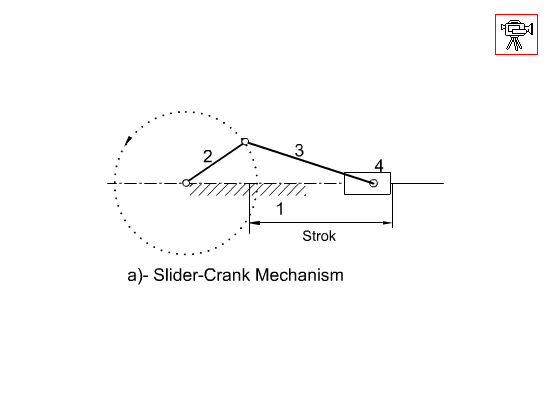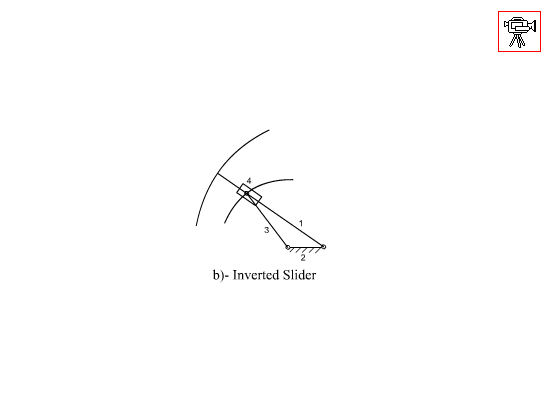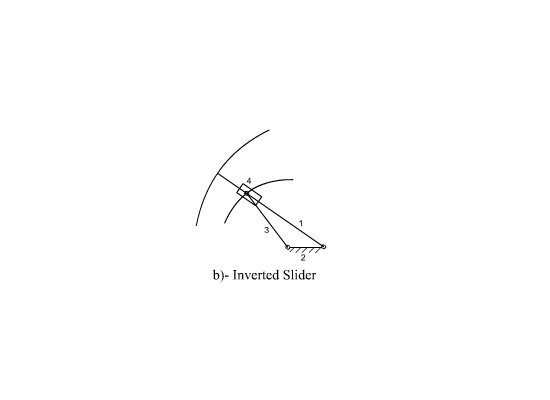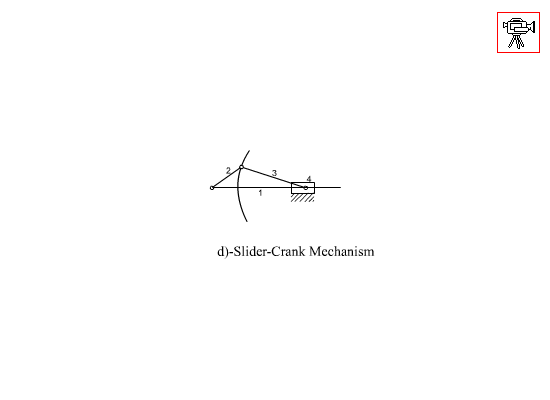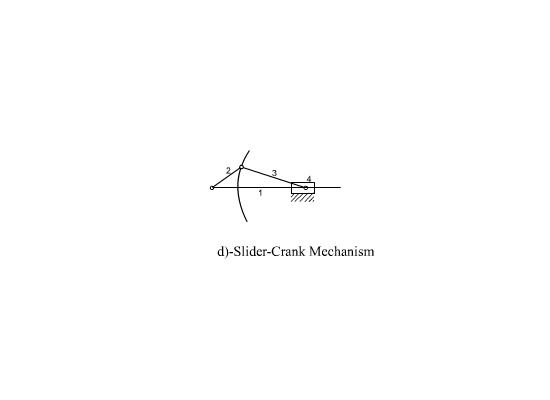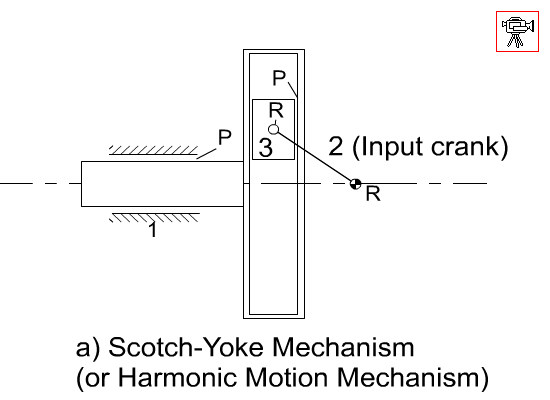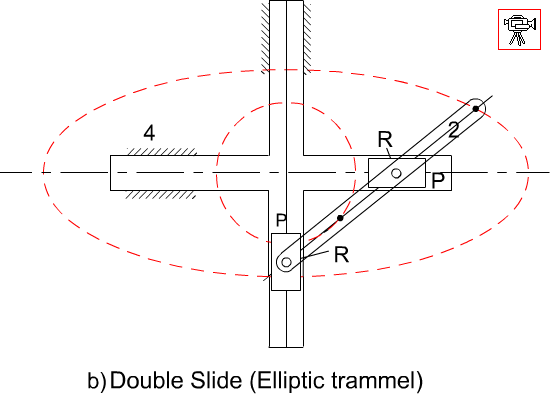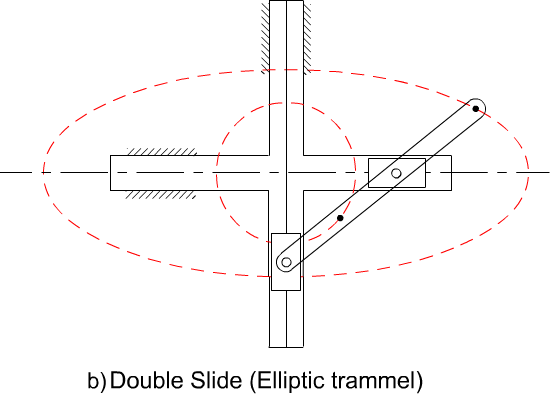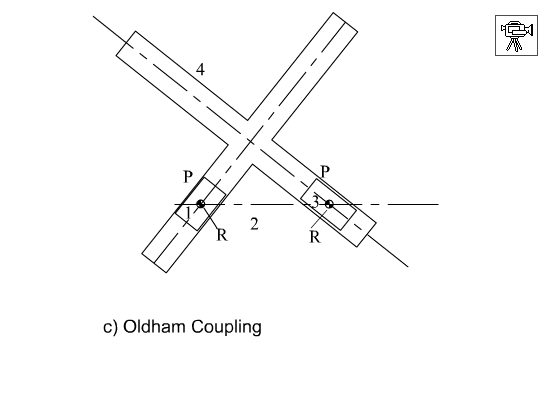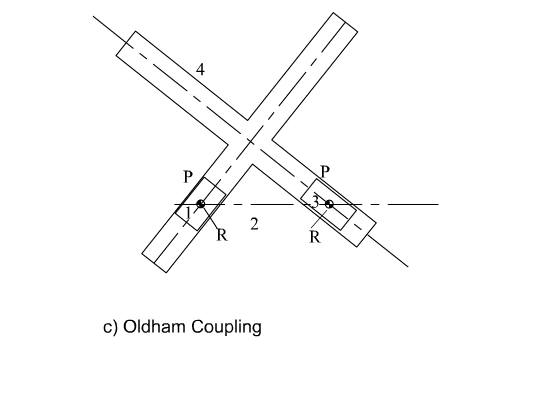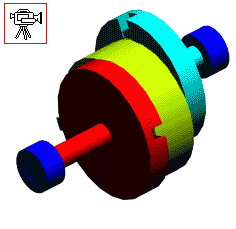2.3 Kinematic Inversion
Kinematic inversion is the process of fixing different links in a kinematic chain (or assuming any one of the links, other than the fixed link as fixed). It is a good method of generating some new mechanisms and it is very often used for the synthesis and analysis of the mechanisms to determine the relative motion between the links. In the figures below the kinematic inversions of a four-link chain with three revolute and one prismatic pairs are shown.
Although the joints and the link length dimensions are the same, four different mechanisms results. In terms of kinematic structure, note that the mechanisms obtained by fixing link 1 or 4 are the same (Figures a and d). The basic difference is that what was the crank length before is now the connecting rod length and what was the connecting rod is now the crank length.
Oldham Coupling: This is the practical application of the mechanism shown at the right.Notice that links 1 and 3 are in the form of a cylinder. Link 4 is also a cylinder which forms two prismatic joints with the extensions on each side. The shape of the link is completely unimportant. The cylindrical shape is used for mass balancing.
Above is the three different inversions of a four-link mechanism with 2 revolute and 2 pismatic joints and where one link contains two kinematic elements forming revolute joints only and another link whose kinematic elements forms prismatic joints (the axes of the two prismatic joints cannot be parallel).
